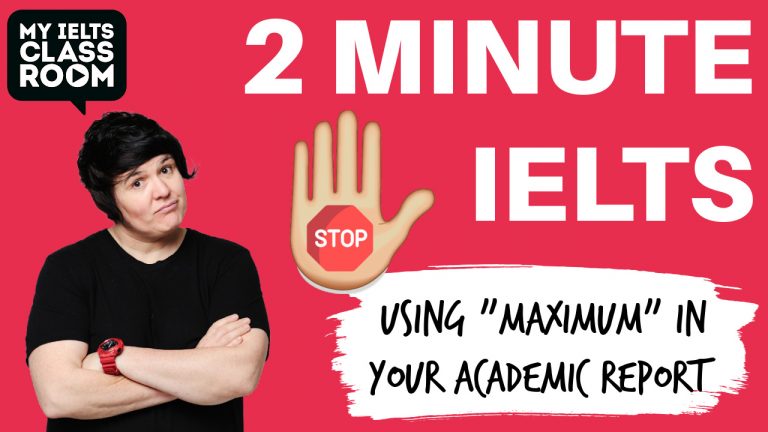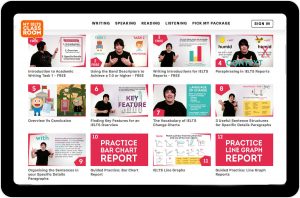
IELTS Academic Task 1 vocabulary – STOP using “maximum”!
Hey! Every student sitting the exam needs to make sure that they have enough IELTS Academic Task 1 vocabulary to achieve a high score. However, I have noticed over the last few months that many students are making the same mistake again and again. They are using the word “maximum” to try to compare items on a chart.
You must NEVER do this!
Maximum is a word that means “the most possible” but in almost all IELTS charts that there is no number that is “the most possible”! Watch my short video to learn why not and what other words you can use to accurately compare the items on the chart instead.
What IELTS Academic Task 1 vocabulary should I learn?
Good question! The great thing IELTS Academic Task 1 is that there is a limit amount of lexis to learn. All you need to do is make sure that you learn vocabulary that allows you to describe the following trends accurately:
- You will need language that will allow you describe CHANGE i.e. lexis to describe increases, decreases, and stability. Also, remember to add adverbs of adjectives to your sentences to accurately describe how big or small the change was. Add words such as “slightly” or “considerably” to your sentences can make a big difference.
- You will also need language that will allow you to COMARE. Unlike the language needed to describe change, the language of comparisons requires a high-knowledge of grammar not lexis. This is because you will need to be able to use comparatives and superlatives accurately. My advice would be to make sure that you can use words like “highest”, “lowest”, “more”, and “less” accurately. And definitely do NOT use “maximum:.
- You will also need language that will allow you to describe changes to a MAP. Remember that not all IELTS Academic Task 1 tasks are charts. You may also be given a map to describe, so you will need to know the specific vocabulary to describe changes to places. Again, just like change charts, you will need to learn a range of lexis for
- when items are added (i.e. X was constructed”)
- when items are removed (i.e. X was demolished”)
- and when one item is replaced with another “X was converted into Y”).
- You will also need to use the passive voice in a map report, so make sure you have a good handle on that too.
- Finally, you will also need language to describe a PROCESS. Actually, there is very little specific IELTS Academic Task 1 vocabulary for processes, but you will need to learn sentence structures that help you to avoid the present simple!
Having a good knowledge of IELTS Academic Task 1 vocabulary is only part of your score!
Remember that vocabulary is only one part of your final score. In order to achieve a 7.0 or higher, you will also need to be able to achieve a high score for Coherence and Cohesion, Grammatical Range and Accuracy, and Task Achievement.

In my experience, most students struggle most with Task Achievement, as they are not able to locate the key features for the chart. Make sure that you know the range of different key features that are possible for all of the above charts. We explain them all in our 10-hour video course for Academic Writing Task 1 (alongside everything else you need for a 7.0+), but you can start by understanding the basics of key features for change charts on this link.
